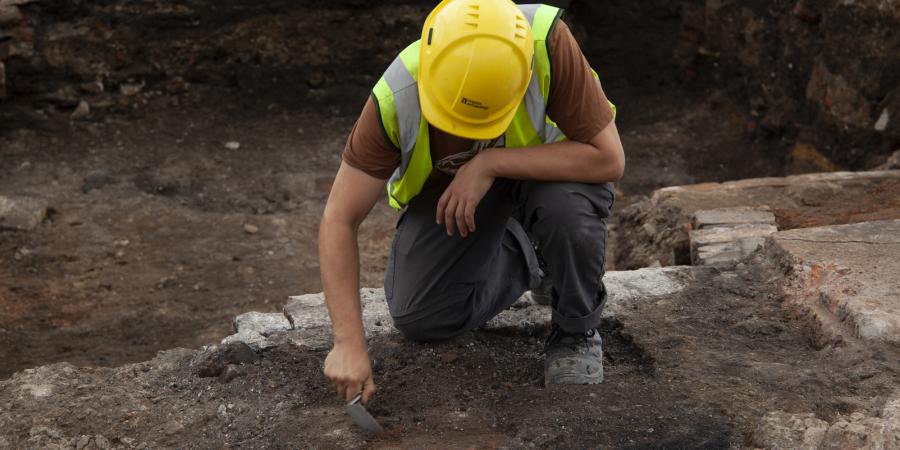No sign of Sheffield Castle yet, but plenty of the 19th century archaeology.
If you are, dear reader, just like me, very much in love with industrial archaeology – this week you are in for a treat.
All 11 trenches are now opened – two are focusing on the moat that was surrounding the castle, three are checking out the foundations of the 20th century Castle Markets and six, in the upper part of the site, are to investigate the post-medieval remains and potential medieval layers. To add to the scale of works and the complexity of the site – one of the ‘moat trenches’ will be up to 6 m deep and will require shoring. This will happen in a few weeks but for now...
Our possible cementation furnace turns out to be a bit of a conundrum. Rod Mackenzie, archaeometallurgist who kindly visited the site thinks we might have cementation furnace related structures, but not the cementation furnace per se. The structures are related to the 19th century Castle Hill Steel Works and we all have our fingers crossed that one of the features turns into a furnace related cellar. Other trenches contain more of the Castle Hill Steel Works related buildings, drains and yards. We have also found part of the Castle Hill Road depicted on the 1850s and 1890s Ordnance Survey maps. A slot excavated in one of the trenches in the area of the former yard revealed a clean deposit that may be natural. Next week we will have a geologist on site, and advised by the South Yorkshire Archaeological Services, and with welcome help from our volunteers and students, we will investigate this further.
To the west and north-west there is evidence for the back of the court fronting Waingate/Exchange Street and part of the adjoining Castle Hill Works. There is a wall of a building shown on the 1890s Ordnance Survey map and some features that we thought might be grinding troughs (there is a large grinding stone present in one of the trenches) although they appear to be are too narrow for the thickness of the stone… According to Goad’s Insurance Plan of Sheffield from 1896 this is where G. W. Sharman’s Wholesale Tea Dealer had his premises so could the remains be related to that phase of the site?
Medievalists, please don’t fret. Not to disappoint, so far the site has given us some undoubtedly re-used but still interestingly looking, very large stones and a freshly recovered small area of cobbled surface.
See you all next week.



